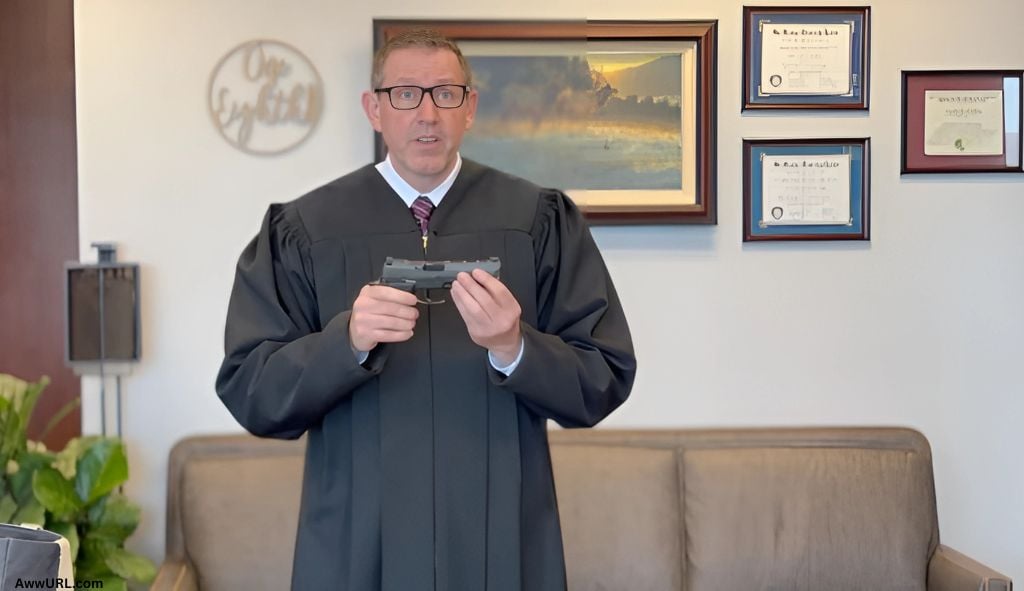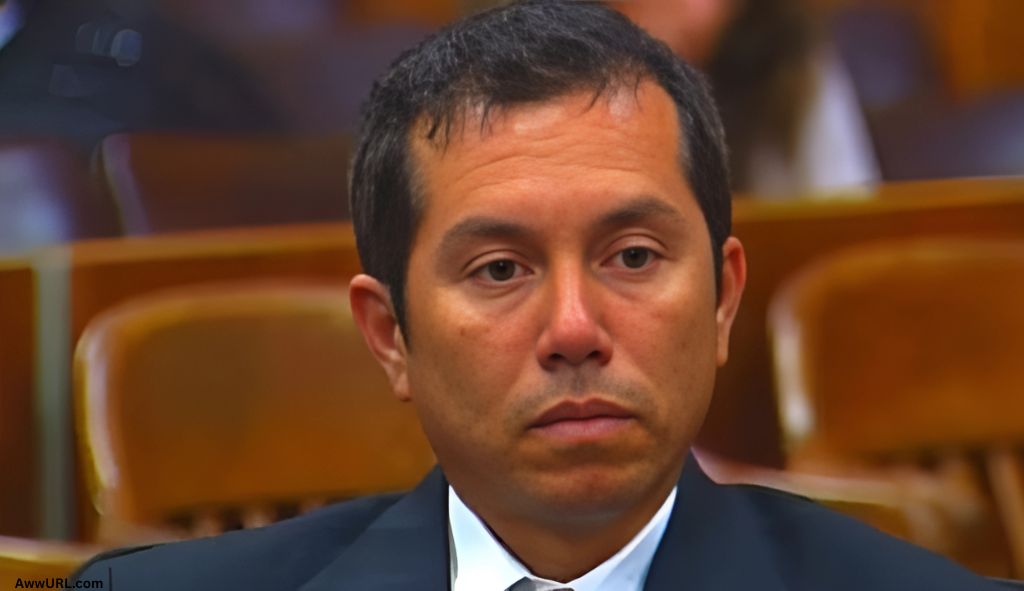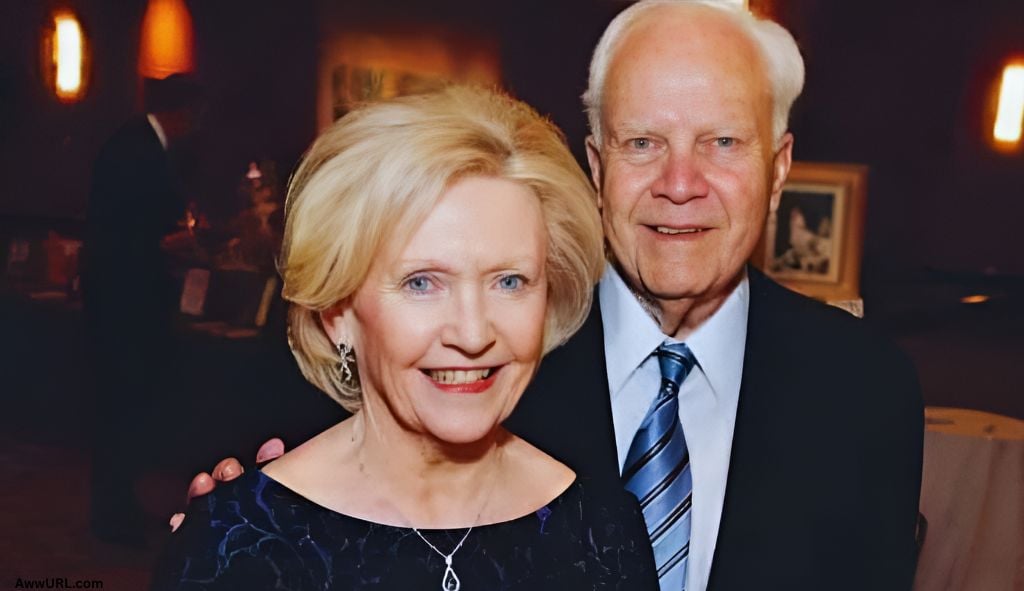
📅 Full Name: Lawrence James Christopher VanDyke
🎂 Birth Date: December 12, 1972 (Age 52)
🏡 Birthplace: Midland, Texas
👨👩👧👦 Family: Married to Cheryl VanDyke, three children
🎓 Education: Montana State University (Engineering), Harvard Law School
⚖️ Current Position: Judge, U.S. Court of Appeals for the Ninth Circuit
🏛️ Chambers: Reno, Nevada
👔 Appointed By: President Donald Trump (2019)
📱 Social Media: Not active on social platforms
In March 2025, VanDyke didn't just write a traditional dissent when the Ninth Circuit Court of Appeals upheld California's ban on high-capacity magazines. Instead, he filmed himself in his judicial chambers, handling firearms and explaining why he thought his fellow judges were wrong. The video sparked outrage, praise, and intense debate about judicial conduct in the digital age.
From Engineering to the Federal Bench
You might be surprised to learn that VanDyke didn't start out planning to be a lawyer. Growing up in Bozeman, Montana, he followed in his father's footsteps into the family construction business after studying civil engineering at Montana State University
He earned his engineering degree with highest honors in 1997, then completed a master's degree in construction engineering management. For several years, he worked in the construction industry, but disputes with lawyers made him realize he wanted to understand the legal system better.
That decision led him to Harvard Law School, where he graduated magna cum laude in 2005 and served as an editor of the prestigious Harvard Law Review. His path from construction sites to the federal courthouse truly touches many hearts as an example of how career changes can lead to unexpected success.
Building a Conservative Legal Career
After law school, VanDyke quickly established himself in conservative legal circles. He clerked for Judge Janice Rogers Brown on the D.C. Circuit Court of Appeals, a position that gave him insight into appellate court operations.
His career trajectory took him through various high-profile positions. He served as Assistant Solicitor General of Texas, then became Solicitor General of Montana, and later held the same role in Nevada. These positions put him at the forefront of constitutional law debates, particularly on issues involving gun rights, religious freedom, and environmental regulations.
In 2014, he ran unsuccessfully for the Montana Supreme Court in what became the state's most expensive Supreme Court campaign, spending over $1.6 million. Though he lost, the experience prepared him for the scrutiny that would come with his federal appointment.
Keep reading to learn more about what happened when Trump nominated him to the federal bench!
The Controversial Path to Confirmation
When President Trump nominated VanDyke to the Ninth Circuit in 2019, the legal establishment wasn't exactly thrilled. The American Bar Association gave him a rare 'Not Qualified' rating, describing him as 'arrogant, lazy, an ideologue, and lacking in knowledge of the day-to-day practice including procedural rules'.
The ABA also questioned his temperament and commitment to being 'candid and truthful'. During his confirmation hearing, VanDyke became emotional when questioned about whether he would be fair to LGBTQ individuals, a moment that went viral and drew both sympathy and criticism.
Despite the controversy, the Republican-controlled Senate confirmed him in a 51-44 vote in December 2019. His supporters argued that his critics were engaging in character assassination based on political disagreements rather than legitimate qualifications concerns.
Moreover, VanDyke's appointment was part of Trump's broader effort to reshape the federal judiciary with conservative judges who would serve for decades.
The Video That Changed Everything
In March 2025, VanDyke found himself at the center of a legal firestorm that would define his judicial legacy. When the Ninth Circuit voted 7-4 to uphold California's ban on magazines holding more than 10 rounds, VanDyke didn't just disagree - he revolutionized how judges express dissent.
His 18-minute video, filmed in his judicial chambers while wearing his black robes, showed him disassembling handguns and explaining their mechanics. With a mounted AK-style rifle visible in the background, VanDyke argued that his colleagues lacked 'basic familiarity with firearms' and had created an unworkable legal standard.
'I think anyone with a basic familiarity with firearms could show you that this attempted distinction is simply inconsistent with reality', VanDyke said in the video, referring to the majority's classification of magazines as 'accessories' rather than essential components.
The video immediately drew fierce criticism from his judicial colleagues. Judge Marsha Berzon called it 'wildly improper' and accused VanDyke of 'essentially appointing himself as an expert witness' in a case he was deciding.
As we discussed, this wasn't just about legal procedure - it represented a fundamental clash over how judges should communicate with the public in the digital age.
The Legal Community Reacts
You won't believe how divided the legal community became over VanDyke's video dissent. Traditional legal scholars were horrified, arguing that judges shouldn't become social media influencers or introduce new evidence outside the official record.
'Judges shouldn't be striving to be social media influencers', said Jacob Charles, a law professor at Pepperdine University. Critics worried that VanDyke's approach could set a dangerous precedent for judicial conduct.
However, gun rights advocates praised VanDyke's willingness to educate his colleagues about firearms mechanics. They argued that too many judges make decisions about gun laws without understanding how firearms actually work.
The video also highlighted broader tensions within the Ninth Circuit, which has long been criticized by conservatives for what they see as liberal activism. VanDyke's supporters viewed his video as a necessary pushback against judicial overreach.
Keep reading to learn more about VanDyke's judicial philosophy and what this means for the future!
A Judge's Philosophy in Action

VanDyke's video wasn't just a one-off stunt - it reflected his broader judicial philosophy that emphasizes originalism and textualism. He believes judges should interpret laws based on their original meaning rather than evolving societal standards.
Throughout his time on the Ninth Circuit, VanDyke has consistently championed conservative positions on constitutional issues. He's written opinions defending gun rights, religious freedom, and challenging what he sees as federal overreach.
His approach often puts him at odds with the Ninth Circuit's traditionally liberal majority. In previous cases, he's criticized his colleagues for what he views as result-oriented decision-making that ignores legal precedent.
Moreover, VanDyke's engineering background gives him a unique perspective on technical issues that often arise in federal court. His supporters argue this practical experience makes him better equipped to handle complex regulatory cases.
The Road to Supreme Court Consideration
You might be interested to know that VanDyke's ambitions extend beyond the Ninth Circuit. In September 2020, President Trump added him to his Supreme Court shortlist as a potential replacement for Justice Ruth Bader Ginsburg.
Though Trump ultimately chose Amy Coney Barrett, VanDyke's inclusion on the list signaled his rising profile within conservative legal circles. At 52, he's young enough to serve on the Supreme Court for decades if given the opportunity.
His controversial video dissent, while criticized by some, may actually enhance his credentials with conservative activists who want Supreme Court justices willing to take bold stands on constitutional issues.
Legal observers note that VanDyke's willingness to challenge conventional judicial norms could appeal to politicians seeking transformative rather than incremental change in the courts.
Keep reading to learn more about what this all means for the future of the federal judiciary!
A Truly Inspiring Journey
As we've discussed throughout this article, Judge Lawrence VanDyke's story represents both the possibilities and controversies of modern judicial appointments. From his humble beginnings in Montana's construction industry to his position on one of America's most influential courts, his journey truly inspiring in its unconventional path.
Whether you agree with his methods or not, VanDyke's willingness to challenge established norms has sparked important conversations about judicial transparency, constitutional interpretation, and the role of technical expertise in legal decision-making.
His video dissent may have been unprecedented, but it reflects broader questions about how courts should communicate with the public in the digital age. As younger, tech-savvy judges join the federal bench, we may see more innovative approaches to judicial communication.
Moreover, VanDyke's story touches many hearts as an example of how diverse professional backgrounds can enrich judicial decision-making. His engineering training provides perspectives that purely legal minds might miss.
We hope you find this article helpful in understanding one of the federal judiciary's most controversial and fascinating figures. VanDyke's career reminds us that the law isn't just about precedent and procedure - it's about real people making decisions that affect millions of Americans every day.
Frequently Asked Questions
Q: What is Judge VanDyke's current position?
A: Judge Lawrence VanDyke serves on the U.S. Court of Appeals for the Ninth Circuit, with chambers in Reno, Nevada. He was confirmed to this position in December 2019.
Q: What was controversial about his video dissent?
A: In March 2025, VanDyke filmed an 18-minute video in his judicial chambers showing himself handling firearms to criticize his colleagues' decision upholding California's magazine ban. Fellow judges called it 'wildly improper' for introducing evidence outside the official record.
Q: What is VanDyke's educational background?
A: He holds a B.S. in Civil Engineering (1997) and Master of Construction Engineering Management (2000) from Montana State University, a Bachelor of Theology from Bear Valley Bible Institute (2002), and a J.D. from Harvard Law School (2005), where he graduated magna cum laude.
Q: Was he considered for the Supreme Court?
A: Yes, President Trump added VanDyke to his Supreme Court shortlist in September 2020 as a potential replacement for Justice Ruth Bader Ginsburg, though Trump ultimately chose Amy Coney Barrett.
Q: What was the American Bar Association's rating of VanDyke?
A: The ABA gave VanDyke a rare 'Not Qualified' rating during his confirmation process, citing concerns about his temperament and describing him as 'arrogant, lazy, an ideologue, and lacking in knowledge of day-to-day practice.


.jpg)